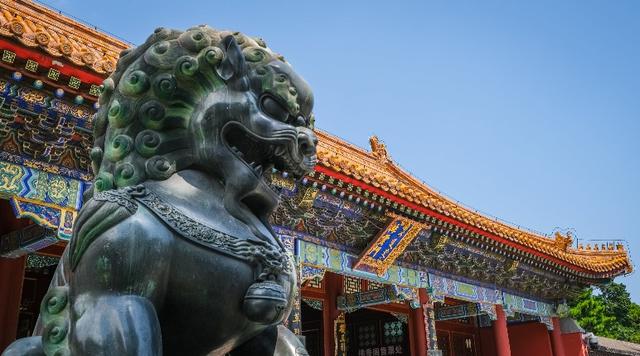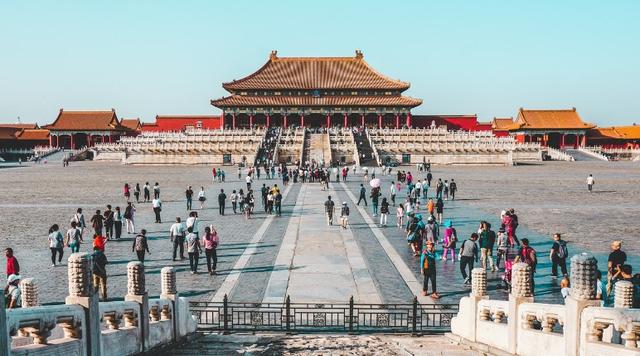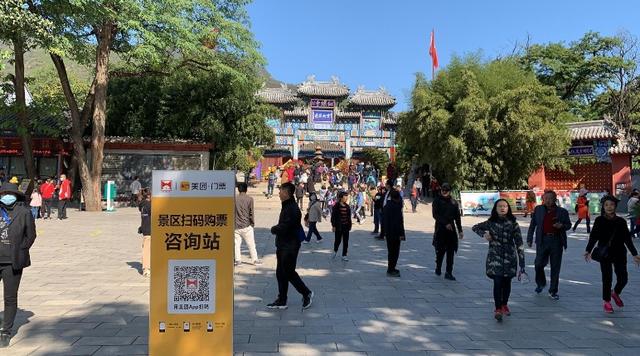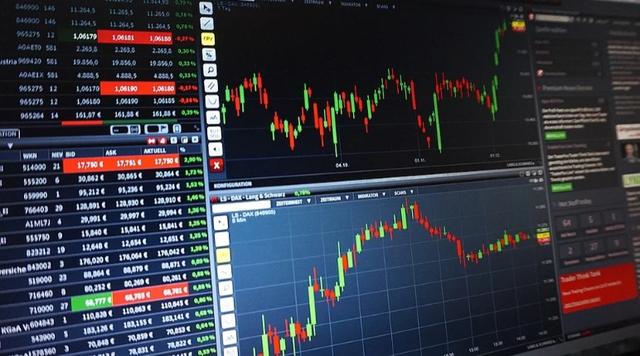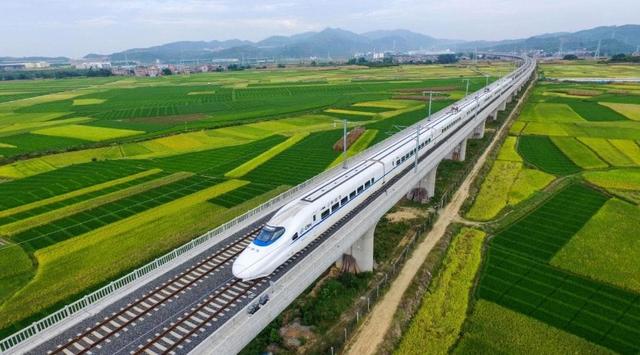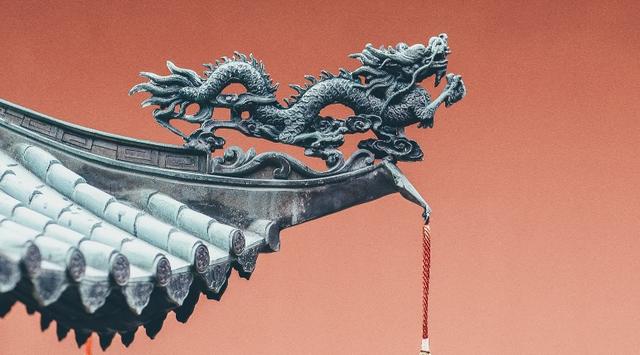토픽별 인사이트: China
While investors would look at it as a period of crackdown on for profit tutoring businesses, since the “Double Reduction” policy (to reduce the pressures of homework and after-school tutoring) in 2021, young students indeed are able to spend more time on extracurricular activities that they enjoy. Given the size of addressable market, there has been a proliferation of various STEM (Science, Technology, Engineering, and Mathematics) learning, traditional culture and art-jamming activities in China, including many well-equipped new establishments fitted out with the latest digital technologies such as AI, 3D exhibitions and robotic guides, catering to various developmental needs and interests of children who now have more free time at hand they can deploy for more fun activities. Take the Guangdong province for example, there are 150 public libraries, 144 cultural centers, 352 museums, and 141 art museums built as of 2023 – and many of these are free of charge or charge very affordable fees available for both locals and visitors. In this article we share some of the popular ones that you may find of interest for your next trip to the region.
2024년 3월 26일
While investors would look at it as a period of crackdown on for profit tutoring businesses, since the “Double Reduction” policy (to reduce the pressures of homework and after-school tutoring) in 2021, young students indeed are able to spend more time on extracurricular activities that they enjoy. Given the size of addressable market, there has been a proliferation of various STEM (Science, Technology, Engineering, and Mathematics) learning, traditional culture and art-jamming activities in China, including many well-equipped new establishments fitted out with the latest digital technologies such as AI, 3D exhibitions and robotic guides, catering to various developmental needs and interests of children who now have more free time at hand they can deploy for more fun activities. Take the Guangdong province for example, there are 150 public libraries, 144 cultural centers, 352 museums, and 141 art museums built as of 2023 – and many of these are free of charge or charge very affordable fees available for both locals and visitors. In this article we share some of the popular ones that you may find of interest for your next trip to the region.
2024년 3월 26일
Consumer spending in China continues to grow strongly by international standards, even as the pattern of that spending evolves. The image of weak consumerism in China – as portrayed by the media – is misleading in two ways. For starters, the growth in retail sales in China is only “low” relative to the very high (mostly double digit) rates recorded in the 2010s. However, at 7.2% y/y growth in the full year 2023, China’s retail sales growth compares very well internationally. Beyond that, there are also changing social trends which are driving different forms of consumption in China, which then support investments that are more reflective of the transformation in China. In this article, we discuss more about how young Chinese are the main driving force in China’s consumer market and identify the winners of this quiet but significant sea change in consumer behaviour.
2024년 3월 1일
Consumer spending in China continues to grow strongly by international standards, even as the pattern of that spending evolves. The image of weak consumerism in China – as portrayed by the media – is misleading in two ways. For starters, the growth in retail sales in China is only “low” relative to the very high (mostly double digit) rates recorded in the 2010s. However, at 7.2% y/y growth in the full year 2023, China’s retail sales growth compares very well internationally. Beyond that, there are also changing social trends which are driving different forms of consumption in China, which then support investments that are more reflective of the transformation in China. In this article, we discuss more about how young Chinese are the main driving force in China’s consumer market and identify the winners of this quiet but significant sea change in consumer behaviour.
2024년 3월 1일
There is a big disconnect between the image of the Chinese economy portrayed by the media and the underlying data. As we start the year, we review key pieces of data from both China and the US. In summary, while the data for China has not been as good as the market may have liked, it was better than what the media would have had us believe. A quick run through the China data for the first nine months of the year, as collated by “China Briefing”: Growth in real GDP 5.2%; industry output 4.0%; services output 6.0%; retail sales 6.8%; fixed asset investment 3.1%. These are very decent growth figures by any international comparison. And China achieved the above figures with a smaller fiscal deficit than the US and while bearing the burden of rebalancing growth away from dependence on the property sector.
2024년 1월 15일
There is a big disconnect between the image of the Chinese economy portrayed by the media and the underlying data. As we start the year, we review key pieces of data from both China and the US. In summary, while the data for China has not been as good as the market may have liked, it was better than what the media would have had us believe. A quick run through the China data for the first nine months of the year, as collated by “China Briefing”: Growth in real GDP 5.2%; industry output 4.0%; services output 6.0%; retail sales 6.8%; fixed asset investment 3.1%. These are very decent growth figures by any international comparison. And China achieved the above figures with a smaller fiscal deficit than the US and while bearing the burden of rebalancing growth away from dependence on the property sector.
2024년 1월 15일
Investors should expect a better return in Chinese equities in 2024 after three consecutive negative yearly return. Indeed, it is the first time that China stock market has recorded an annual loss three times in a row. Slowing economy, heighted China-US bilateral relationship, strong dollar and property market slump all contributed to the disappointing performance in the past twelve months. Looking ahead, the market may offer more upside risks because of (1) stronger supportive policies rolling out to help lift economic activities and particularly the property sector, (2) geopolitical tensions tuning down with increasing dialogues between Chinese and US top government officials, (3) domestic long-term investors’ buying and foreign investors’ current significantly underweight position in Chinese equities, and (4) value emerging from the discounted share prices on both absolute and relative basis. Bamboo is a symbol of longevity in China because of its durability, strength, flexibility, and resilience. It survives in the harshest conditions, persevere and still standing tall and staying green year-round. When the storm comes, bamboo bends with the wind. With business and consumer confidence continue to recover amid the much more accommodating, easing environment, Chinese entrepreneurs and the equities market should finally be in for a year of promising growth ahead.
2023년 12월 18일
Investors should expect a better return in Chinese equities in 2024 after three consecutive negative yearly return. Indeed, it is the first time that China stock market has recorded an annual loss three times in a row. Slowing economy, heighted China-US bilateral relationship, strong dollar and property market slump all contributed to the disappointing performance in the past twelve months. Looking ahead, the market may offer more upside risks because of (1) stronger supportive policies rolling out to help lift economic activities and particularly the property sector, (2) geopolitical tensions tuning down with increasing dialogues between Chinese and US top government officials, (3) domestic long-term investors’ buying and foreign investors’ current significantly underweight position in Chinese equities, and (4) value emerging from the discounted share prices on both absolute and relative basis. Bamboo is a symbol of longevity in China because of its durability, strength, flexibility, and resilience. It survives in the harshest conditions, persevere and still standing tall and staying green year-round. When the storm comes, bamboo bends with the wind. With business and consumer confidence continue to recover amid the much more accommodating, easing environment, Chinese entrepreneurs and the equities market should finally be in for a year of promising growth ahead.
2023년 12월 18일
INSIGHT2024 Market Outlook - Part 1: Through the sentiment extremes, cycle change and secular trends
Global markets have hit extremes in sentiment – extreme exuberance towards the US and Japan and extreme pessimism about China. That sentiment has in part been driven by straight line projections of the cycle – the expectation that the US will continue its current path towards “Goldilocks” and Japan can sustain its currency depreciation-led earnings growth. The risks are that the cycle in the US transitions not to “Goldilocks” but to recession, and Japan’s Yen depreciation/reflation cycle cannot be sustained without dangerous inflation and ultimately government debt consequences. For China, the extreme in pessimism is predicated on the assumption that China cannot escape its cyclical weakness of the last 12 months, notwithstanding its ample policy “ammunition”.
2023년 12월 18일
INSIGHT2024 Market Outlook - Part 1: Through the sentiment extremes, cycle change and secular trends
Global markets have hit extremes in sentiment – extreme exuberance towards the US and Japan and extreme pessimism about China. That sentiment has in part been driven by straight line projections of the cycle – the expectation that the US will continue its current path towards “Goldilocks” and Japan can sustain its currency depreciation-led earnings growth. The risks are that the cycle in the US transitions not to “Goldilocks” but to recession, and Japan’s Yen depreciation/reflation cycle cannot be sustained without dangerous inflation and ultimately government debt consequences. For China, the extreme in pessimism is predicated on the assumption that China cannot escape its cyclical weakness of the last 12 months, notwithstanding its ample policy “ammunition”.
2023년 12월 18일
Bloomberg reported that Chinese policymakers, led by the Ministry of Finance and the National Development and Reform Commission, are planning to launch a new round of stimulus, involving a potential issuance of at least RMB 1 trillion of additional China government bonds and an upward revision of fiscal budget deficit. Some investors may be worried about its negative impact on the bond market with the potential jump in supply. In this article, our Partner & Co-CIO David Lai discusses why we agree with most analysts that it would not create any lasting impact even if the plan materializes. In fact, China remains disciplined in fiscal policy whilst the overall monetary stance stays accommodative. China government bonds have outperformed almost all other sovereign bonds this year due to the rate cuts and low inflation expectations. The long end of China yield curve in particular benefited the most year-to-date, with the yields on 10-year, 30-year, and 50-year having fallen 13.8bps, 18.0bps, and 20.2bps respectively already.
2023년 10월 19일
Bloomberg reported that Chinese policymakers, led by the Ministry of Finance and the National Development and Reform Commission, are planning to launch a new round of stimulus, involving a potential issuance of at least RMB 1 trillion of additional China government bonds and an upward revision of fiscal budget deficit. Some investors may be worried about its negative impact on the bond market with the potential jump in supply. In this article, our Partner & Co-CIO David Lai discusses why we agree with most analysts that it would not create any lasting impact even if the plan materializes. In fact, China remains disciplined in fiscal policy whilst the overall monetary stance stays accommodative. China government bonds have outperformed almost all other sovereign bonds this year due to the rate cuts and low inflation expectations. The long end of China yield curve in particular benefited the most year-to-date, with the yields on 10-year, 30-year, and 50-year having fallen 13.8bps, 18.0bps, and 20.2bps respectively already.
2023년 10월 19일
China has emerged as the world’s largest consumer and producer for industrial robots and equipment. In fact, the country recorded US$6.6 billion sales of industrial robotics in 2022, most of which were produced domestically, far more than the second largest country Germany which registered US$2 billion sales during the same year. Propelled by its changing demographics and its evolution from low-cost manufacturing to high-value added processes, China will continue to drive the development of a homegrown robotics sector and pursue manufacturing upgrade, as underscored by China’s 14th Five Year Plan which explicitly laid out the national strategic goal of building a modern high tech society. Sector leaders would be natural beneficiaries of support measures for this broad policy. In this article we discuss more about how along with development of a highly integrated ecosystem of high tech processes and smart manufacturing systems, China is also integrating new materials, new energy, smart grids and energy saving systems, etc. to its technology-enabled ecosystem that sits well with China’s 2060 net zero targets, and its national strategic goal towards a modern, high tech society.
2023년 9월 29일
China has emerged as the world’s largest consumer and producer for industrial robots and equipment. In fact, the country recorded US$6.6 billion sales of industrial robotics in 2022, most of which were produced domestically, far more than the second largest country Germany which registered US$2 billion sales during the same year. Propelled by its changing demographics and its evolution from low-cost manufacturing to high-value added processes, China will continue to drive the development of a homegrown robotics sector and pursue manufacturing upgrade, as underscored by China’s 14th Five Year Plan which explicitly laid out the national strategic goal of building a modern high tech society. Sector leaders would be natural beneficiaries of support measures for this broad policy. In this article we discuss more about how along with development of a highly integrated ecosystem of high tech processes and smart manufacturing systems, China is also integrating new materials, new energy, smart grids and energy saving systems, etc. to its technology-enabled ecosystem that sits well with China’s 2060 net zero targets, and its national strategic goal towards a modern, high tech society.
2023년 9월 29일
The youth unemployment rate in China has been much talked about, however the phenomenon is often poorly interpreted without addressing the important nuances behind the structural, transformational and societal factors in China. In fact, the elevated unemployment rate is a transitional legacy from COVID and many countries also shared the experience of high youth unemployment. There is a lag in China’s youth unemployment data compared to western countries, given China’s relatively late reopening from the COVID pandemic. In this article, we discuss the structural factors contributing to the youth unemployment rate in China, and explain why the number will likely to decline and why the unemployed youth will be absorbed into workforce as China continues on its path of recovery.
2023년 8월 24일
The youth unemployment rate in China has been much talked about, however the phenomenon is often poorly interpreted without addressing the important nuances behind the structural, transformational and societal factors in China. In fact, the elevated unemployment rate is a transitional legacy from COVID and many countries also shared the experience of high youth unemployment. There is a lag in China’s youth unemployment data compared to western countries, given China’s relatively late reopening from the COVID pandemic. In this article, we discuss the structural factors contributing to the youth unemployment rate in China, and explain why the number will likely to decline and why the unemployed youth will be absorbed into workforce as China continues on its path of recovery.
2023년 8월 24일
In a refreshing break from the consensus of gloom surrounding China, Cambridge Associates wrote recently that the Chinese economy was not stalling. Meanwhile IMF holds steady its China GDP growth forecasts in the World Economic Outlook Update report released last week, at 5.2% for 2023 and 4.5% for 2024. In this article, our Senior Advisor Say Boon Lim shares more about why China may surprise to the upside and the appeal of Chinese equities as a relative value play.
2023년 8월 3일
In a refreshing break from the consensus of gloom surrounding China, Cambridge Associates wrote recently that the Chinese economy was not stalling. Meanwhile IMF holds steady its China GDP growth forecasts in the World Economic Outlook Update report released last week, at 5.2% for 2023 and 4.5% for 2024. In this article, our Senior Advisor Say Boon Lim shares more about why China may surprise to the upside and the appeal of Chinese equities as a relative value play.
2023년 8월 3일
The “Urban Village Redevelopment” initiatives outlined at the Politburo Meeting in July could potentially create new housing demand which is valued at over RMB 2 trillion per year and property fixed asset investment worth RMB 0.4 trillion per annum. What is urban villages, and why is it a significant development to monitor? In this article, we discuss why urban villages are an integral part of China's new phase of urbanization, and how this links up with China's smart and green city planning, and a holistic set of initiatives that roll up to building China towards its goals of building China into a high tech, modern society under the 14th Five Year Plan.
2023년 8월 2일
The “Urban Village Redevelopment” initiatives outlined at the Politburo Meeting in July could potentially create new housing demand which is valued at over RMB 2 trillion per year and property fixed asset investment worth RMB 0.4 trillion per annum. What is urban villages, and why is it a significant development to monitor? In this article, we discuss why urban villages are an integral part of China's new phase of urbanization, and how this links up with China's smart and green city planning, and a holistic set of initiatives that roll up to building China towards its goals of building China into a high tech, modern society under the 14th Five Year Plan.
2023년 8월 2일
With the world except for China busy taming inflation, the China “lost decade” narrative has been driving pessimism over Chinese assets in recent months. How much of this fear could be substantiated and how much of it is fear of shadows? In this article our Senior Advisor Say Boon Lim reviews this topic from multiple angles, and explains why China today is unlikely to be Japan 1990 given significant differences in labour forces, total factor productivity (TFP), government policy focus, R&D spendings, financial resources and tools available to the government as well as structural growth from urbanisation and well capitalised state-owned banks that continue to support the case for China to avoid Japan’s secular stagnation.
2023년 7월 10일
With the world except for China busy taming inflation, the China “lost decade” narrative has been driving pessimism over Chinese assets in recent months. How much of this fear could be substantiated and how much of it is fear of shadows? In this article our Senior Advisor Say Boon Lim reviews this topic from multiple angles, and explains why China today is unlikely to be Japan 1990 given significant differences in labour forces, total factor productivity (TFP), government policy focus, R&D spendings, financial resources and tools available to the government as well as structural growth from urbanisation and well capitalised state-owned banks that continue to support the case for China to avoid Japan’s secular stagnation.
2023년 7월 10일
As China’s post reopening recovery has taken a slower pace than the high hopes of the markets, there have been concerns that China’s economic growth will be lower for longer resembling Japan’s "Lost Decade". However it is important to note China and its people do have a solid track record of resilience, and there are several structural features of China that differentiates it from other emerging markets or Japan in its growth trajectory. In this article, our Senior Advisor Say Boon Lim shares 12 interesting charts to review in the context of China’s relatively high economic resilience (as measured by the Swiss Re Institute’s Resilience Index), comparing with MSCI Emerging Markets ex-China’s key constituents namely India, Brazil, South Korea, Taiwan, and Saudi Arabia. Economic resilience being a product a policy stability and prudence, are pointing to an undervalued opportunity in Chinese equities and the appeal of Chinese government bonds for its stable yield at a time when other countries’ government rates and bond yields are surging.
2023년 7월 3일
As China’s post reopening recovery has taken a slower pace than the high hopes of the markets, there have been concerns that China’s economic growth will be lower for longer resembling Japan’s "Lost Decade". However it is important to note China and its people do have a solid track record of resilience, and there are several structural features of China that differentiates it from other emerging markets or Japan in its growth trajectory. In this article, our Senior Advisor Say Boon Lim shares 12 interesting charts to review in the context of China’s relatively high economic resilience (as measured by the Swiss Re Institute’s Resilience Index), comparing with MSCI Emerging Markets ex-China’s key constituents namely India, Brazil, South Korea, Taiwan, and Saudi Arabia. Economic resilience being a product a policy stability and prudence, are pointing to an undervalued opportunity in Chinese equities and the appeal of Chinese government bonds for its stable yield at a time when other countries’ government rates and bond yields are surging.
2023년 7월 3일
Premia CSI Caixin China Bedrock Economy ETF (2803.HK), Premia CSI Caixin China New Economy ETF (3173.HK), Premia China STAR50 ETF (3151.HK), and Premia Asia Innovative Technology and Metaverse Theme ETF (3181.HK) recently completed the annual rebalancing exercise after market close on Jun 9th 2023. In this article we highlight the changes and provide a brief analysis of the post-rebalance profiles of each ETF.
2023년 6월 19일
Premia CSI Caixin China Bedrock Economy ETF (2803.HK), Premia CSI Caixin China New Economy ETF (3173.HK), Premia China STAR50 ETF (3151.HK), and Premia Asia Innovative Technology and Metaverse Theme ETF (3181.HK) recently completed the annual rebalancing exercise after market close on Jun 9th 2023. In this article we highlight the changes and provide a brief analysis of the post-rebalance profiles of each ETF.
2023년 6월 19일
중국 4월 데이터는 시장 기대치에 미치지 못했지만, 실망감은 시장이 자체적으로 매우 높게 세운 기대치에서 비롯된 것인데요. 사실상 이른바 4월의 "실망감"은 전세계적인 맥락에서 본다면 아주 다르게 보입니다. 이번 인사이트에서 당사의 선임 고문 Say Boon Lim은 중국의 자체 5% 성장 목표와 올해 중국이 세계 GDP 성장의 약 30%에 기여할 것이라는 IMF의 예상을 고려해볼 때 그렇게 높은 기대치에 미달한 것에 대한 실망보다는 더 큰 산을 볼 필요가 있다고 전했습니다.
2023년 6월 8일
ChinaA-sharesBedrock economyValueSmart BetaFactor InvestingEconomic RecoveryTechnologyNew EconomySTAR BOARD
과거 투자자들은 중국 주식 소유시 국영기업(SOE)보단 민영기업(POE)을 더 선호했습니다. 보통 민영기업은 더 효율적으로 운영되며 성장·이익·혁신을 추구하는 경향이 있는 반면, 국영기업은 보통 관료주의, 사회적 책임, 고용·사회적 안정 지원, 그리고 변화·혁신과는 거리가 먼 전통적인 사내문화에 얽매인 채 운영된다는 고정관념이 존재했기 때문이다. 그러나 정부의 강력한 지원 뿐만 아니라, 국영기업 개혁을 촉진하고 국영기업들의 가치 발굴을 강조하는 새 정책들이 속속 등장함에 따라, 이제는 이러한 고정관념을 타파할 때가 된 것 같습니다. 변화를 위해 노력하고, 또 진정한 경제 발전에 기여할 수 있도록 재편성되고 새로운 가치를 발견할 수 있게끔 정책 결정자들의 전폭적인 지지를 받는 국영기업들이 새로이 등장하고 있기 때문입니다. 이 글에서는 최근 인기를 끌고 있는 국영기업 리레이팅/가치 재평가 테마의 배경에 대해 논의해볼 것이며, 중국 국영기업 테마에 적절한 익스포져를 갖기 위한 최적의 방법을 소개합니다.
2023년 5월 26일
ChinaA-sharesBedrock economyValueSmart BetaFactor InvestingEconomic RecoveryTechnologyNew EconomySTAR BOARD
과거 투자자들은 중국 주식 소유시 국영기업(SOE)보단 민영기업(POE)을 더 선호했습니다. 보통 민영기업은 더 효율적으로 운영되며 성장·이익·혁신을 추구하는 경향이 있는 반면, 국영기업은 보통 관료주의, 사회적 책임, 고용·사회적 안정 지원, 그리고 변화·혁신과는 거리가 먼 전통적인 사내문화에 얽매인 채 운영된다는 고정관념이 존재했기 때문이다. 그러나 정부의 강력한 지원 뿐만 아니라, 국영기업 개혁을 촉진하고 국영기업들의 가치 발굴을 강조하는 새 정책들이 속속 등장함에 따라, 이제는 이러한 고정관념을 타파할 때가 된 것 같습니다. 변화를 위해 노력하고, 또 진정한 경제 발전에 기여할 수 있도록 재편성되고 새로운 가치를 발견할 수 있게끔 정책 결정자들의 전폭적인 지지를 받는 국영기업들이 새로이 등장하고 있기 때문입니다. 이 글에서는 최근 인기를 끌고 있는 국영기업 리레이팅/가치 재평가 테마의 배경에 대해 논의해볼 것이며, 중국 국영기업 테마에 적절한 익스포져를 갖기 위한 최적의 방법을 소개합니다.
2023년 5월 26일
China’s stock market rode a wave of positive sentiment on a policy shift that brought the world’s second-largest economy out of lockdown, pushing the CSI 300 Index up 4.7% for the quarter and leading to even stronger performance for strategies applying intelligent factor tilts within the bedrock economy and new economy. Even so, macro data throughout the quarter charting China’s recovery from strict zero-COVID containment measures led some investors to question the strength and sustainability of the nation’s economic rebound. In this article, Dr. Phillip Wool, Global Head of Research of Rayliant Global Advisors discusses first-quarter performance and considers what the next phase of China’s reopening could mean for investors.
2023년 5월 18일
China’s stock market rode a wave of positive sentiment on a policy shift that brought the world’s second-largest economy out of lockdown, pushing the CSI 300 Index up 4.7% for the quarter and leading to even stronger performance for strategies applying intelligent factor tilts within the bedrock economy and new economy. Even so, macro data throughout the quarter charting China’s recovery from strict zero-COVID containment measures led some investors to question the strength and sustainability of the nation’s economic rebound. In this article, Dr. Phillip Wool, Global Head of Research of Rayliant Global Advisors discusses first-quarter performance and considers what the next phase of China’s reopening could mean for investors.
2023년 5월 18일
Banking failures in the US, the recent epic takeover of Credit Suisse and the wipe out of its AT1, speak volumes about the stage of the cycle in Developed Markets. In particular, they warn against underestimating the risks at this stage of the asset and economic cycles. The Fed now risks a return to 1970-1985 if it loses its nerve on rates, and it is going into battle with very little – rates are lower than at previous cyclical bottoms and inflation is higher. In this article, our Senior Advisor Say Boon Lim shares his reflections on the US cycle, inflations, rates and asset markets, and while US asset market outlook is worrying, why China is increasingly becoming a safe haven trade for investors.
2023년 3월 20일
Banking failures in the US, the recent epic takeover of Credit Suisse and the wipe out of its AT1, speak volumes about the stage of the cycle in Developed Markets. In particular, they warn against underestimating the risks at this stage of the asset and economic cycles. The Fed now risks a return to 1970-1985 if it loses its nerve on rates, and it is going into battle with very little – rates are lower than at previous cyclical bottoms and inflation is higher. In this article, our Senior Advisor Say Boon Lim shares his reflections on the US cycle, inflations, rates and asset markets, and while US asset market outlook is worrying, why China is increasingly becoming a safe haven trade for investors.
2023년 3월 20일
ChinaChina New EconomySTAR BOARDInnovationReopeningConsumption UpgradeQualityGrowthInflationInterest rateHigh-techAI5GSemiconductorGreen EconomyNew Energy
중국 시장은 2022년 10월 이후 중국 리오프닝과 코로나 정책 완화에 따른 강한 반등세를 보였는데요. 해외 중국주식에서 장기적인 강세장에 돌입하여 초과수익률을 낼 수 있을 것으로 기대되는 중국A주로 투자 자금 흐름 로테이션이 관찰되기 시작했습니다. 중국은 현재 리오프닝 경기 회복 궤도 속 어느 지점에 있을까요? 초과수익률을 가져다 줄 수 있는 정책 지원 섹터 리딩기업들은 무엇일까요? 이는 저희 클라이언트들에게 자주 받는 질문들입니다. 이번 글에서는 투자자 분들과의 대화 중 최근에 가장 많았던 질문 10가지를 소개해드리려고 합니다. 또, 중국의 리오프닝 그리고 그 다음 챕터인 경제성장 회복 궤도 속에서 발생되는 기회들에 대한 인사이트를 공유합니다.
2023년 3월 17일
ChinaChina New EconomySTAR BOARDInnovationReopeningConsumption UpgradeQualityGrowthInflationInterest rateHigh-techAI5GSemiconductorGreen EconomyNew Energy
중국 시장은 2022년 10월 이후 중국 리오프닝과 코로나 정책 완화에 따른 강한 반등세를 보였는데요. 해외 중국주식에서 장기적인 강세장에 돌입하여 초과수익률을 낼 수 있을 것으로 기대되는 중국A주로 투자 자금 흐름 로테이션이 관찰되기 시작했습니다. 중국은 현재 리오프닝 경기 회복 궤도 속 어느 지점에 있을까요? 초과수익률을 가져다 줄 수 있는 정책 지원 섹터 리딩기업들은 무엇일까요? 이는 저희 클라이언트들에게 자주 받는 질문들입니다. 이번 글에서는 투자자 분들과의 대화 중 최근에 가장 많았던 질문 10가지를 소개해드리려고 합니다. 또, 중국의 리오프닝 그리고 그 다음 챕터인 경제성장 회복 궤도 속에서 발생되는 기회들에 대한 인사이트를 공유합니다.
2023년 3월 17일
China market has taken a pause after a strong rally in the past few months. The renewed hawkish tone from the US Fed may be the main reason behind the consolidation. Some critics are suggesting that the China reopening trade is done, or has become overcrowded already with not much immediate upside as a tactical trade. In this article, our Partner & Co-CIO David Lai addresses this topic from various aspects ranging from macro economies, investors’ positioning, to policy agenda and market valuation. He would also share why we believe it’s onshore A-shares that are picking up the baton for the second act of the rally - as the China reopening play evolves from short term tactical, to fundamental strategic opportunities driven by positive earnings growth and restoration of business and consumer confidence.
2023년 3월 2일
China market has taken a pause after a strong rally in the past few months. The renewed hawkish tone from the US Fed may be the main reason behind the consolidation. Some critics are suggesting that the China reopening trade is done, or has become overcrowded already with not much immediate upside as a tactical trade. In this article, our Partner & Co-CIO David Lai addresses this topic from various aspects ranging from macro economies, investors’ positioning, to policy agenda and market valuation. He would also share why we believe it’s onshore A-shares that are picking up the baton for the second act of the rally - as the China reopening play evolves from short term tactical, to fundamental strategic opportunities driven by positive earnings growth and restoration of business and consumer confidence.
2023년 3월 2일
Chinese stocks took a rollercoaster ride in Q4, as the immediate lacklustre reaction to October’s National Congress gave way to a rally on the back of policy support in November. Investors finally cheered Beijing’s abrupt dismantling of its restrictive zero-COVID policies, as the year came to a close. By the end of December, the CSI 300 Index was up 2% on the quarter. Below in this article, Dr. Philip Wool, Managing Director and Head of Investment Solutions of Rayliant Global Advisors, would explore critical developments in the macro picture at the turn of the year, discuss fourth-quarter performance and factor rotation pattern through the period, and also provide our thoughts as to what reopening has in store for Chinese stocks in 2023.
2023년 2월 4일
Chinese stocks took a rollercoaster ride in Q4, as the immediate lacklustre reaction to October’s National Congress gave way to a rally on the back of policy support in November. Investors finally cheered Beijing’s abrupt dismantling of its restrictive zero-COVID policies, as the year came to a close. By the end of December, the CSI 300 Index was up 2% on the quarter. Below in this article, Dr. Philip Wool, Managing Director and Head of Investment Solutions of Rayliant Global Advisors, would explore critical developments in the macro picture at the turn of the year, discuss fourth-quarter performance and factor rotation pattern through the period, and also provide our thoughts as to what reopening has in store for Chinese stocks in 2023.
2023년 2월 4일
In 2022, our Premia CSI Caixin China Bedrock Economy ETF (“the Bedrock ETF”) outperformed most of the market benchmarks, such as FTSE A50, CSI 300, CSI 500 and ChiNext, by around 10-24% points. In a backdrop of weak equity performance, investors favored low beta and volatility stocks with significant economic value and good financial health, which coincided with the Bedrock ETF’s underlying index methodology and broadly explained why the ETF outperformed in 2022. In this article, we would have a more in-depth look at the portfolio holdings’ companies and decipher drivers of the outperformance and whether this multi-factor approach of low volatility, value, quality and size tilts would continue to power outperformance in 2023.
2023년 2월 3일
In 2022, our Premia CSI Caixin China Bedrock Economy ETF (“the Bedrock ETF”) outperformed most of the market benchmarks, such as FTSE A50, CSI 300, CSI 500 and ChiNext, by around 10-24% points. In a backdrop of weak equity performance, investors favored low beta and volatility stocks with significant economic value and good financial health, which coincided with the Bedrock ETF’s underlying index methodology and broadly explained why the ETF outperformed in 2022. In this article, we would have a more in-depth look at the portfolio holdings’ companies and decipher drivers of the outperformance and whether this multi-factor approach of low volatility, value, quality and size tilts would continue to power outperformance in 2023.
2023년 2월 3일
ChinaInnovationSTAR BOARDTechnologyA-sharesSemiconductorAdvanced ManufacturingAILife ScienceBiotechGreen EconomyNew MaterialsRenewable EnergyNew Economy
2023년, 투자자들은 경제침체기를 맞게될 서양과 중국의 회복으로 가파른 성장세에 올라탈 동양 사이에 극명한 경제적 차이를 보게 될 것입니다. 2022년, 재개방 반등세를 이미 자체적으로 경험한 ASEAN-5국가들이 내년에는 중국의 재개방 회복세 순풍에 올라탈 것으로 전망됩니다. 이번 논설에서는 ASEAN-5 국가들이2023년 비교적 완만한 인플레와 세계적으로도 가장 높은 수준의 경제성장률을 시현하며 어떻게 스윗스폿(Sweet Spot)을 계속 선점하게 될 지 다뤄볼 예정입니다.
2022년 12월 13일
ChinaInnovationSTAR BOARDTechnologyA-sharesSemiconductorAdvanced ManufacturingAILife ScienceBiotechGreen EconomyNew MaterialsRenewable EnergyNew Economy
2023년, 투자자들은 경제침체기를 맞게될 서양과 중국의 회복으로 가파른 성장세에 올라탈 동양 사이에 극명한 경제적 차이를 보게 될 것입니다. 2022년, 재개방 반등세를 이미 자체적으로 경험한 ASEAN-5국가들이 내년에는 중국의 재개방 회복세 순풍에 올라탈 것으로 전망됩니다. 이번 논설에서는 ASEAN-5 국가들이2023년 비교적 완만한 인플레와 세계적으로도 가장 높은 수준의 경제성장률을 시현하며 어떻게 스윗스폿(Sweet Spot)을 계속 선점하게 될 지 다뤄볼 예정입니다.
2022년 12월 13일
2023년, 투자자들은 경제침체를 맞게 될 서양과 중국시장 회복 영향으로 가파른 성장세를 보일 동양 사이에 극명한 경제 차이를 보게 될 것입니다. 내년 중국 재개방 회복세는2022년 재개방 반등세를 이미 자체적으로 경험한 ASEAN-5국가들에 또 한번의 뒷바람으로 작용할 것으로 전망됩니다. 이번 논설에서는 ASEAN-5 국가들이2023년 비교적 완만한 인플레와 세계적으로도 가장 높은 수준의 경제성장률을 시현하며 어떻게 최적 지점(Sweet Spot)을 계속 선점할 수 있을지 다뤄볼 예정입니다.
2022년 12월 12일
2022년에는 전세계적으로 투자자들이 플러스 수익률을 낼 수 있는 시장을 찾는 것 자체가 어려웠습니다. 중국시장 역시 H주, A주, ADR주 모두 올해 첫 11개월 간 달러 수익률이 20~29%씩 하락하는 등 매도세에서 벗어날 수 없었는데요. 외국인 투자자들의 순매도세가 이어지는 동안 시장 회전율은 감소하였습니다. 중국 내부적으로 잦은 코로나 봉쇄조치, 부동산 시장 침체, 계속되는 빅테크 감시, 미중 관계 악화 등의 요인 모두 중국 증시 약세 기조에 기여했습니다. 대외적으로는 우크라이나-러시아 전쟁, 높은 인플레 압력, 가속화된 금리 인상 주기, 달러 강세 등의 이벤트들로 인해 위험자산에 대한 투자자 신뢰도가 더욱 약화되었습니다.
2022년 12월 6일
2022년에는 전세계적으로 투자자들이 플러스 수익률을 낼 수 있는 시장을 찾는 것 자체가 어려웠습니다. 중국시장 역시 H주, A주, ADR주 모두 올해 첫 11개월 간 달러 수익률이 20~29%씩 하락하는 등 매도세에서 벗어날 수 없었는데요. 외국인 투자자들의 순매도세가 이어지는 동안 시장 회전율은 감소하였습니다. 중국 내부적으로 잦은 코로나 봉쇄조치, 부동산 시장 침체, 계속되는 빅테크 감시, 미중 관계 악화 등의 요인 모두 중국 증시 약세 기조에 기여했습니다. 대외적으로는 우크라이나-러시아 전쟁, 높은 인플레 압력, 가속화된 금리 인상 주기, 달러 강세 등의 이벤트들로 인해 위험자산에 대한 투자자 신뢰도가 더욱 약화되었습니다.
2022년 12월 6일
In a discordant world, there are no overarching investment themes. The different parts of the world are marching to different drums – their economies and markets are driven by different cycles, different prior policy choices and factors beyond their control. The US economy and market are paying back for the extreme policy stimulus of 2020-2021. Europeans are paying back for the same, with the added pain of a war outside their control. Japan is battling a chronic ailment – extreme debt – made acute by sharply higher cost of US funds. China is at the bottom of its policy cycle, at the beginning of a path out of COVID health controls.
2022년 12월 5일
In a discordant world, there are no overarching investment themes. The different parts of the world are marching to different drums – their economies and markets are driven by different cycles, different prior policy choices and factors beyond their control. The US economy and market are paying back for the extreme policy stimulus of 2020-2021. Europeans are paying back for the same, with the added pain of a war outside their control. Japan is battling a chronic ailment – extreme debt – made acute by sharply higher cost of US funds. China is at the bottom of its policy cycle, at the beginning of a path out of COVID health controls.
2022년 12월 5일
Sichuan has a very real climate change issue to manage this year. After extreme heatwave and drought causing power rationing for industrial users for two weeks, the province is now quickly re-gearing for Level IV flood emergency alert. While most factories are able to resume production now, should we be concerned especially with memories from the power crunch actions last year? What would be the impacts and ripple effects we should pay attention to? In this article we reviewed the background triggering the Sichuan situation, and why we believe the power rationing events are more pre-emptive in nature and energy security is very carefully managed in the planned economy of China.
2022년 8월 31일
Sichuan has a very real climate change issue to manage this year. After extreme heatwave and drought causing power rationing for industrial users for two weeks, the province is now quickly re-gearing for Level IV flood emergency alert. While most factories are able to resume production now, should we be concerned especially with memories from the power crunch actions last year? What would be the impacts and ripple effects we should pay attention to? In this article we reviewed the background triggering the Sichuan situation, and why we believe the power rationing events are more pre-emptive in nature and energy security is very carefully managed in the planned economy of China.
2022년 8월 31일
Notwithstanding the cautious sentiment towards Chinese equities over the past year, the fundamentals suggest that it would be increasingly difficult to ignore Chinese equities as its economic heft and importance continues to grow. In this article, our Senior Advisor Say Boon Lim analyzes the fundamentals of the Chinese economy and why it makes sense for global allocators to deploy Chinese equities for diversification and growth opportunities as the alternative would be a deliberate underweight decision for a large part of the world's GDP and the key driver for global productivity growth.
2022년 8월 11일
Notwithstanding the cautious sentiment towards Chinese equities over the past year, the fundamentals suggest that it would be increasingly difficult to ignore Chinese equities as its economic heft and importance continues to grow. In this article, our Senior Advisor Say Boon Lim analyzes the fundamentals of the Chinese economy and why it makes sense for global allocators to deploy Chinese equities for diversification and growth opportunities as the alternative would be a deliberate underweight decision for a large part of the world's GDP and the key driver for global productivity growth.
2022년 8월 11일
It’s again time for annual rebalance of our Premia Asia Innovative Technology and Metaverse Theme ETF (3181 HK) as well as our China A-shares ETFs - Premia CSI Caixin China New Economy ETF (3173 HK), Premia CSI Caixin China Bedrock Economy ETF (2803 HK), Premia China STAR50 ETF (3151 HK). The rebalances were successfully completed on Jun 10th 2022, and in this article we highlight the changes made and also provide brief analyses comparing the profiles before and after the rebalance exercise.
2022년 6월 16일
It’s again time for annual rebalance of our Premia Asia Innovative Technology and Metaverse Theme ETF (3181 HK) as well as our China A-shares ETFs - Premia CSI Caixin China New Economy ETF (3173 HK), Premia CSI Caixin China Bedrock Economy ETF (2803 HK), Premia China STAR50 ETF (3151 HK). The rebalances were successfully completed on Jun 10th 2022, and in this article we highlight the changes made and also provide brief analyses comparing the profiles before and after the rebalance exercise.
2022년 6월 16일
Q1 has been an eventful start for the year 2022 where the world has experienced economic turbulence, regional conflict and continued COVID impact. United States is facing record high inflation tackled with aggressive monetary policy on interest rate hike and balance sheet reduction. We have also seen regional conflicts causing supply chain disruption in certain field such as oil and gas. In China, although in a much better inflation environment, Covid outbreak since late Q1 in Shanghai and some other cities had caused some disruption to China A share market.
2022년 5월 13일
Q1 has been an eventful start for the year 2022 where the world has experienced economic turbulence, regional conflict and continued COVID impact. United States is facing record high inflation tackled with aggressive monetary policy on interest rate hike and balance sheet reduction. We have also seen regional conflicts causing supply chain disruption in certain field such as oil and gas. In China, although in a much better inflation environment, Covid outbreak since late Q1 in Shanghai and some other cities had caused some disruption to China A share market.
2022년 5월 13일
2021 has been a challenging year for many, with significant divergence within the Chinese equities universe and frequent growth/ value factor rotations through each quarter. We had also experienced regulatory and policy headwind and tailwind that drove significant market movements. Since the end of 2021, China’s equity market has experienced correction which has brought valuation back to attractive level. Both our Premia CSI Caixin China New Economy ETF (3173 HK) and Premia China Bedrock Economy ETF (2803 HK) continue to provide effective diversification tools to global investors and we illustrate a 50/50 blended portfolio that would outperform the broader market and its peers consistently.
2022년 3월 2일
2021 has been a challenging year for many, with significant divergence within the Chinese equities universe and frequent growth/ value factor rotations through each quarter. We had also experienced regulatory and policy headwind and tailwind that drove significant market movements. Since the end of 2021, China’s equity market has experienced correction which has brought valuation back to attractive level. Both our Premia CSI Caixin China New Economy ETF (3173 HK) and Premia China Bedrock Economy ETF (2803 HK) continue to provide effective diversification tools to global investors and we illustrate a 50/50 blended portfolio that would outperform the broader market and its peers consistently.
2022년 3월 2일
AsiaASEANChinaBondChina BondsNew EnergySmart EVNew EconomySTAR BOARDSmart BetaVietnamMiddle Income ClassHigh YieldTax Efficient
In the US the “triple peaks” in economic growth, earnings growth and policy stimulus will likely result in much lower returns for US equities in 2022. The persistently high inflation – which will likely run hotter in the US than Europe and Japan – is already causing greater volatility as US equities are put on tenterhooks over the timing and magnitude of rate hikes. Meanwhile US Dollar could weaken on inflation rather than strengthen on higher Treasury yields. On the other hand, Emerging Markets, usually do better during periods of Dollar weakness but this time we could see a new twist - this favours China, supported by easier financial conditions. On top of all these, how is the Omicron Virus going to impact the global markets and what are the implications for global asset allocations in 2022? Why ASEAN would be a good diversification within Emerging Markets? Further to Part 1 of our 2022 outlook piece earlier, in this Part 2 sequel our Senior Advisor Say Boon Lim laid out the scenarios and discussed how we can reposition for the global shifts accordingly to address the transition to tightening and pivot from US equities.
2021년 12월 16일
AsiaASEANChinaBondChina BondsNew EnergySmart EVNew EconomySTAR BOARDSmart BetaVietnamMiddle Income ClassHigh YieldTax Efficient
In the US the “triple peaks” in economic growth, earnings growth and policy stimulus will likely result in much lower returns for US equities in 2022. The persistently high inflation – which will likely run hotter in the US than Europe and Japan – is already causing greater volatility as US equities are put on tenterhooks over the timing and magnitude of rate hikes. Meanwhile US Dollar could weaken on inflation rather than strengthen on higher Treasury yields. On the other hand, Emerging Markets, usually do better during periods of Dollar weakness but this time we could see a new twist - this favours China, supported by easier financial conditions. On top of all these, how is the Omicron Virus going to impact the global markets and what are the implications for global asset allocations in 2022? Why ASEAN would be a good diversification within Emerging Markets? Further to Part 1 of our 2022 outlook piece earlier, in this Part 2 sequel our Senior Advisor Say Boon Lim laid out the scenarios and discussed how we can reposition for the global shifts accordingly to address the transition to tightening and pivot from US equities.
2021년 12월 16일
After the smooth sail in 2020, 2021 has been a challenging year for investors with heightened volatility across global markets. Asia Pacific ex-Japan equities, Emerging Asia and in particular China had a good start until mid-February, but then returned all the gains and stayed largely flat on increasing regulatory headwinds in China, extended COVID-lockdowns in southeast Asia, threats of power crunch and credit defaults among Chinese property developers. On the contrary, benchmarks like S&P500, Nasdaq and Euro Stoxx 50 all reached new highs during the year, and Nikkei 225 hit its highest point in three decades. Meanwhile, the divergence in the fixed income markets went the other way, as global fixed income market suffered a mid-single-digit percentage loss in return, while China sovereign bonds bucked the trend with a high-single-digit percentage gain. Where do we go from here? Is the Omicron virus going to reset the path to 2020? And how do we decipher impacts of the Fed tapering, inflation and interest rate expectations, and economic growth and policy trends in China? In this article, our Partner & Co-CIO David Lai assesses the world economics and markets current standings, focusing on China and Asia, and discusses how to reconfigure for new opportunities that arise into 2022 as a year of the new normal.
2021년 12월 8일
After the smooth sail in 2020, 2021 has been a challenging year for investors with heightened volatility across global markets. Asia Pacific ex-Japan equities, Emerging Asia and in particular China had a good start until mid-February, but then returned all the gains and stayed largely flat on increasing regulatory headwinds in China, extended COVID-lockdowns in southeast Asia, threats of power crunch and credit defaults among Chinese property developers. On the contrary, benchmarks like S&P500, Nasdaq and Euro Stoxx 50 all reached new highs during the year, and Nikkei 225 hit its highest point in three decades. Meanwhile, the divergence in the fixed income markets went the other way, as global fixed income market suffered a mid-single-digit percentage loss in return, while China sovereign bonds bucked the trend with a high-single-digit percentage gain. Where do we go from here? Is the Omicron virus going to reset the path to 2020? And how do we decipher impacts of the Fed tapering, inflation and interest rate expectations, and economic growth and policy trends in China? In this article, our Partner & Co-CIO David Lai assesses the world economics and markets current standings, focusing on China and Asia, and discusses how to reconfigure for new opportunities that arise into 2022 as a year of the new normal.
2021년 12월 8일
The recent regulatory crackdowns and power suspension in China have unnerved many international investors. How to configure for opportunities under the lens of common prosperity and China’s commitment for carbon neutrality by 2060? In this article, we compare the Premia China STAR50 ETF (3151.HK) and Premia CSI Caixin China New Economy ETF (3173.HK), and discuss why they are useful implementation tools to capture long term opportunities in hardcore technology and strategic new economy sectors under the 14th Five Year Plan.
2021년 10월 12일
The recent regulatory crackdowns and power suspension in China have unnerved many international investors. How to configure for opportunities under the lens of common prosperity and China’s commitment for carbon neutrality by 2060? In this article, we compare the Premia China STAR50 ETF (3151.HK) and Premia CSI Caixin China New Economy ETF (3173.HK), and discuss why they are useful implementation tools to capture long term opportunities in hardcore technology and strategic new economy sectors under the 14th Five Year Plan.
2021년 10월 12일
We recently completed the annual rebalancing exercise for the two China A shares and Asia Innovative Technology ETFs. In this article our Portfolio Manager Alex and Partner & Co-CIO David will share more about the changes and portfolio characteristics post-rebalancing, which further align with strategic focuses of China’s 14th Five Year Plan, and recalibrate for opportunities in the new normal as COVID recovery in China and Asia enters the next stage.
2021년 6월 24일
We recently completed the annual rebalancing exercise for the two China A shares and Asia Innovative Technology ETFs. In this article our Portfolio Manager Alex and Partner & Co-CIO David will share more about the changes and portfolio characteristics post-rebalancing, which further align with strategic focuses of China’s 14th Five Year Plan, and recalibrate for opportunities in the new normal as COVID recovery in China and Asia enters the next stage.
2021년 6월 24일
A popular media narrative for the recent correction in Chinese equities was that it was caused by tightening of financial conditions in China.
2021년 3월 31일
Being the first-in-first-out, China has been the first one to reopen and recover from the pandemic last year. While the recovery has been uneven and is still underway going into 2021, in Q4 we observed sector and factor rotation started to kick in, with Value and LowRisk being the best performers toward the year end.
2021년 3월 23일
Being the first-in-first-out, China has been the first one to reopen and recover from the pandemic last year. While the recovery has been uneven and is still underway going into 2021, in Q4 we observed sector and factor rotation started to kick in, with Value and LowRisk being the best performers toward the year end.
2021년 3월 23일
Economic policy settings between the United States and China – which have been diverging since the onset of the COVID-19 pandemic – are now on stark display as a result of the recent outcomes of the annual plenary session of the National People’s Congress.
2021년 3월 18일
The great divergence between economic growth in China versus the rest of the Emerging Markets post-COVID-19 has increased the likelihood of a parting of ways between China and EM in asset allocations.
2021년 3월 9일
US sanctions on trade, technology, and financial market access have done little to dampen foreign investor enthusiasm for China. There has been a surge in foreign investment flows, both portfolio and direct, into China over the course of 2020: All of which begs the questions “why” and “how sustainable is this”?
2021년 2월 25일
US sanctions on trade, technology, and financial market access have done little to dampen foreign investor enthusiasm for China. There has been a surge in foreign investment flows, both portfolio and direct, into China over the course of 2020: All of which begs the questions “why” and “how sustainable is this”?
2021년 2월 25일
The only major economy to grow in 2020. China has turned adversity from the COVID-19 pandemic into the best growth performance in the world for 2020.
2021년 1월 27일
The red-hot performers of the past 12 months have been the broad market indices from North Asia – Kospi (44%), CSI 300 (34%), TWSE (30%)
2021년 1월 12일
Global equities look likely to push higher in 2021, despite the pandemic’s economic and human toll.
2020년 12월 23일
To summarize the year of 2020, the opening lines from Charles Dicken’s A Tale of twin cities sounds like an accurate description. It was certainly the best of times and the worst of times. Global equities have been doing reasonably well with developed market up by 12.0% and emerging market up by 11.7%. Fixed income managed to gain by 7.4% whilst gold price was up by 19.1%. On the other hand, real economy has been suffering from the pandemic with almost all major economies getting into recession. International Monetary Fund sees the world would contract by 4.4% in total output, the worst crisis since the 1930s Great Depression with -5.8% among advanced economies and -3.3% on developing countries.
2020년 12월 2일
To summarize the year of 2020, the opening lines from Charles Dicken’s A Tale of twin cities sounds like an accurate description. It was certainly the best of times and the worst of times. Global equities have been doing reasonably well with developed market up by 12.0% and emerging market up by 11.7%. Fixed income managed to gain by 7.4% whilst gold price was up by 19.1%. On the other hand, real economy has been suffering from the pandemic with almost all major economies getting into recession. International Monetary Fund sees the world would contract by 4.4% in total output, the worst crisis since the 1930s Great Depression with -5.8% among advanced economies and -3.3% on developing countries.
2020년 12월 2일
From a total portfolio perspective, global asset owners and allocators are increasing wary about the overall portfolio sensitivity to interest rate changes and ultimately risk diversification. The concept of “equity duration” was raised long ago and has been subject to debate for decades. While some absolute calculations fail to work in today’s markets, we believe the economic and financial intuition beneath still hold. In this working paper, we took a renewed approach to analyze the relationships from a relative perspective and with an overarching objective of total portfolio risks in mind.
2020년 11월 26일
From a total portfolio perspective, global asset owners and allocators are increasing wary about the overall portfolio sensitivity to interest rate changes and ultimately risk diversification. The concept of “equity duration” was raised long ago and has been subject to debate for decades. While some absolute calculations fail to work in today’s markets, we believe the economic and financial intuition beneath still hold. In this working paper, we took a renewed approach to analyze the relationships from a relative perspective and with an overarching objective of total portfolio risks in mind.
2020년 11월 26일
As business activities in China mostly resume to a normal level, we also observed some mean-reversion in factor returns, and interesting rotation in sector returns. Still, China A shares continue to outperform the US and global equity markets. With “high-quality” growth emphasized by the 14th Five-Year Plan and “Dual Circulation”, we believe “Quality Growth” will continue to be the main tone of China A equities.
2020년 11월 11일
As business activities in China mostly resume to a normal level, we also observed some mean-reversion in factor returns, and interesting rotation in sector returns. Still, China A shares continue to outperform the US and global equity markets. With “high-quality” growth emphasized by the 14th Five-Year Plan and “Dual Circulation”, we believe “Quality Growth” will continue to be the main tone of China A equities.
2020년 11월 11일
China’s 14th, Five-Year Plan is a refreshing reiteration of conventional supply side policies, at a time when Developed Markets are in the grip of very unorthodox economic policies.
2020년 11월 4일
The latest economic data confirms the upward trajectory of Chinese growth, putting China on track to be the only major economy to register growth for the full year 2020. And it highlights the attractiveness of China’s asset markets and supports the case for continued outperformance against other major markets.
2020년 10월 28일
The latest economic data confirms the upward trajectory of Chinese growth, putting China on track to be the only major economy to register growth for the full year 2020. And it highlights the attractiveness of China’s asset markets and supports the case for continued outperformance against other major markets.
2020년 10월 28일
Two separate news items last week focused our attention on the gap in understanding about the rapidly changing energy landscape in China.
2020년 10월 20일
The Chinese economy continues to normalize across the board at an impressive rate, leading to the strong likelihood of it beating the current Bloomberg consensus GDP estimate growth rate of around 2% for 2020.
2020년 10월 6일
The COVID-19 pandemic could accelerate new thinking about Emerging Markets in asset allocations.
2020년 9월 23일
Highest recorded yield spread between the China 10Y Government Bond and the 10Y UST. The yield spread between the China 10-year government bond over the 10-year US Treasury recently hit its widest ever recorded level.
2020년 8월 25일
Are US indices rallying because of COVID-19? The most common narrative is that “US stocks have been rising despite the pandemic.” Perhaps a more accurate explanation is “US stocks have been rising because of the pandemic”.
2020년 8월 12일
After the fall in Q1, global equities recovered sharply in Q2 as the COVID fear eases and stimulus packages kick in around the world. YTD, China is the best performing emerging market, and the broad CSI 300 index gained 14% in the second quarter. From factor investing perspective, we continue to see the dispersion of a two-speed-economy despite an overall beta pick up. Quality growth new economy stocks continue to be the winner.
2020년 8월 11일
After the fall in Q1, global equities recovered sharply in Q2 as the COVID fear eases and stimulus packages kick in around the world. YTD, China is the best performing emerging market, and the broad CSI 300 index gained 14% in the second quarter. From factor investing perspective, we continue to see the dispersion of a two-speed-economy despite an overall beta pick up. Quality growth new economy stocks continue to be the winner.
2020년 8월 11일
Global equities have been doing well in the past few months right after the sharp sell-off in the first quarter of this year. Intuitively, the rally looks like classic irrational exuberance given all major economies are heading into recession whilst the coronavirus infection has no sign to slow down globally. On the other hand, the forward-looking market movement may suggest that investors have looked beyond the pandemic and already positioning themselves to capture the V-shaped rebound. Combined the solid fundamentals with an appealing valuation, China A-share looks like an exposure that investors should accumulate whenever there is a market dip. If so, the more imminent and value-added question for the investors will be what to own in the onshore market.
2020년 7월 23일
Global equities have been doing well in the past few months right after the sharp sell-off in the first quarter of this year. Intuitively, the rally looks like classic irrational exuberance given all major economies are heading into recession whilst the coronavirus infection has no sign to slow down globally. On the other hand, the forward-looking market movement may suggest that investors have looked beyond the pandemic and already positioning themselves to capture the V-shaped rebound. Combined the solid fundamentals with an appealing valuation, China A-share looks like an exposure that investors should accumulate whenever there is a market dip. If so, the more imminent and value-added question for the investors will be what to own in the onshore market.
2020년 7월 23일
The international media reckoned a front-page editorial in the China Securities Journal calling for a “healthy bull market” to create “new opportunities in crisis” was responsible for last week’s red-hot run-up in the Shanghai Composite Index. But perhaps there are less “exciting”, but more enduring, explanations for the surge in Chinese stocks.
2020년 7월 13일
The international media reckoned a front-page editorial in the China Securities Journal calling for a “healthy bull market” to create “new opportunities in crisis” was responsible for last week’s red-hot run-up in the Shanghai Composite Index. But perhaps there are less “exciting”, but more enduring, explanations for the surge in Chinese stocks.
2020년 7월 13일
For Premia CSI Caixin China Bedrock Economy ETF (2803.HK), there were 90 changes among the underlying index constituents during the latest rebalancing in June. The one-way turnover ratio was 33.5%, in line with the historical range between 30% and 40%. The value factor continued to work well with the ETF becoming more attractive in terms of valuation by replacing overvalued stocks with undervalued one. The forward price-to-earnings ratio dropped from 8.1x to 6.3x whilst the price-to-book ratio remained at 1.1x. The quality factor also functioned as designed with both return-on-equity ratio and profit margin increased post-rebalancing. The former rose from 8.9% to 9.7% and the latter increased from 11.3% to 13.6%, reflecting the current stock pool is healthier in financials and stronger in profitability. In addition, the low-volatility screen did help reduce the portfolio’s risk, as shown by the volatility falling from 29.5% to 28.9%. Last but not least, the index’s revenue rose from RMB 19.1 billion to RMB 21.1 billion, capturing the mainstream economy of China. Overall the post rebalancing portfolio represents a basket of constituents with better resilience during the COVID and US China tension induced market growth, with cheaper valuaton, higher ROE, higher profitability, strong debt coverage and lower volatility.From a sector perspective, the major change was reducing exposure in Consumer Discretionary and Industrials, and increasing weights in Financials, Real Estate and Utilities. Drilling down into sub-segments, the additions in Financials are mostly leading banks with attractive valuation, while the deletions in Consumer Discretionary are mostly automobiles related given the challenged fundamentals for the sector. Notwithstanding the market environment, Chinese banks so far have only been affected mildly by the economic slowdown. For example, the industry’s return-on-equity fell slightly from 11.7% to 11.0% and NPL ratio edged up from 1.83% to 1.86%. On a positive note, the net interest margin even surprised on the upside with the number going up from 2.18% to 2.20%. In respect of potential NPL pressure, the additions are also considered with the balancing factor of quality factor, thus focusing banks with robust fundamentals but suppressed valuation during broad market drawdown. Automobile industry was a totally different story with the national sales strinking for the 2nd year in a row. The total vehicle sales fell by 8.2% to 25.8 million in 2019, after having slid nearly 3% in 2018 in the first contraction since the 1990s. The slump was exacerbated by weak economic growth, the trade war with the US and tough new emission standards introduced last summer.For Premia CSI Caixin China New Economy ETF (3173.HK) which has continued the strong trajectory and performed well through COVID and after the rebalancing with YTD ~20% return as of Jun 22nd, it had a higher turnover rate compared to the previous rebalances given the evolution of the new economy trends becoming more pronounced since COVID. There were total 113 replacements, and the one-way turnover was around 45.7%, slightly higher than the historical range of ~40%. As the index methodology prefers companies with light-asset business model, the consistuents showed a slight increment in non-fixed asset ratio from 0.857 to 0.859 post rebalancing. In terms of financial health, the updated basket of stocks reflected a higher quality in general with significant improvement seen in the debt coverage (0.86x to 1.71x), return-on-equity (9.7% to 12.6%), and profit margin (14.6% to 17.3%), representing a more robust set of fundamental staying power for growth given the current market conditions. In fact, this has also been reflected in the resulting strong growth numbers - the index constituents are expected to grow faster with the estimated revenue growth rising from 9.7% to 15.0% after the resuffle. A mid-teen growth rate is indeed impressive amid the macro slowdown and the challenigng COVID-19 impact.From a sector point of view, the major change is an increase in Information Technology versus a reduction in Healthcare and Consumer Discretionary. The additions in Information Technology were diversified into semiconductor, software and communications equipment, which align well with the new infrastructure and Industrial IOT development mentioned in our previous research articles. With the government’s intention to speed up the technolgoical advancement, it is quite rational to see more emerging industry leaders in the capital market. The latest policy expands the conventional infrastructural investment to encompass digital infrastucture aka #New Infrastructure such as 5G network, data centers, Internet of Things and cloud computing are expected to help groom the local champions. On the contrary, the deletions in Consumer Discretionary were mainly auto or consumer-electronic related since consumers were reluctant to make big ticket purchases in an uncertain environment. Besdies, the exports business might also get affected negatively from the rising tensions in global trade.Within Healthcare, the deletions focused on traditional pharmaceuticals which could face more headwinds ahead, in particular for the companies which produce generic drugs. Beijing has been pushing forward a system that requires drugmakers to go through a bidding process and cut prices low enough to be considered over generic copies if they want to sell their products at public hospitals via large-volume government procurement.For Premia Asia Innovative Technology ETF (3181.HK), there were 8 changes out of 50 stocks if excluding Alibaba which switches from the ADR to the shares listed in Hong Kong, due to its re-classification of the primary listing from the US to Hong Kong. Also, each stock is re-scaled back to an equal weight of 2% in the portfolio, following a rebalancing discipline of profit-taking and buying on dip. Among the 8 inclusions, there are 5 Chinese companies, 2 Japanese companies and 1 Korean company covering themes including new infrastructure, media & web services, biopharmaceutical and semiconductors. Only Chinese and Japanese companies are in the deletion list, in which their businesses are mainly related to media & web services, robotics & automation and industry 4.0. Most of the changes in the index were driven by whether the company’s market cap can reach or fall out from the top 50 in the universe.Similar to China New Economy, the post-rebalance portfolio reflects also a basket that resonates well in the COVID/ post-COVID world, where a lot of behavioural changes YTD become permanent phenomena. In terms of sector, although Technology remains the major components, there are some adjustments to the composition reflecting the impacts from the YTD environment. It has shifted some of its weightings from “electronic equipments and hardwares” to “new infrastructure and semiconductors”. The reduction in the former might be partly due to the shift in global supply chain as some multinational corporations have been moving manufacturing bases to the low-cost countries such as Vietnam and Indonesia. The increase in the latter was probablay a result of the policy direction in promoting the domestic competitiveness in technology. Certainly, the stimulus plan in allocating more resources in new infrastructrure also helps the stock performance. For the rest of other sectors like Healthcare, Consumer and Industrials, their respective weightings stayed around the same. The outcome is a diversified basket of innovative technology-enabled leaders across various growth themes, and across currently China, Japan, Korea and Taiwan. Rather than high growth small cap companies or illiquid private companies, these are sector leaders with proven track record, R&D and growth fundamentals, and thus provide a more liquid exposure to the more resilient innovative technology players well positioned to capture the emerging megatrends including consumer and enterprise digital transformation, healthcare/ biotech/ pharmaceutical, and AI, 5G, robotics and industrial automations.
2020년 6월 24일
For Premia CSI Caixin China Bedrock Economy ETF (2803.HK), there were 90 changes among the underlying index constituents during the latest rebalancing in June. The one-way turnover ratio was 33.5%, in line with the historical range between 30% and 40%. The value factor continued to work well with the ETF becoming more attractive in terms of valuation by replacing overvalued stocks with undervalued one. The forward price-to-earnings ratio dropped from 8.1x to 6.3x whilst the price-to-book ratio remained at 1.1x. The quality factor also functioned as designed with both return-on-equity ratio and profit margin increased post-rebalancing. The former rose from 8.9% to 9.7% and the latter increased from 11.3% to 13.6%, reflecting the current stock pool is healthier in financials and stronger in profitability. In addition, the low-volatility screen did help reduce the portfolio’s risk, as shown by the volatility falling from 29.5% to 28.9%. Last but not least, the index’s revenue rose from RMB 19.1 billion to RMB 21.1 billion, capturing the mainstream economy of China. Overall the post rebalancing portfolio represents a basket of constituents with better resilience during the COVID and US China tension induced market growth, with cheaper valuaton, higher ROE, higher profitability, strong debt coverage and lower volatility.From a sector perspective, the major change was reducing exposure in Consumer Discretionary and Industrials, and increasing weights in Financials, Real Estate and Utilities. Drilling down into sub-segments, the additions in Financials are mostly leading banks with attractive valuation, while the deletions in Consumer Discretionary are mostly automobiles related given the challenged fundamentals for the sector. Notwithstanding the market environment, Chinese banks so far have only been affected mildly by the economic slowdown. For example, the industry’s return-on-equity fell slightly from 11.7% to 11.0% and NPL ratio edged up from 1.83% to 1.86%. On a positive note, the net interest margin even surprised on the upside with the number going up from 2.18% to 2.20%. In respect of potential NPL pressure, the additions are also considered with the balancing factor of quality factor, thus focusing banks with robust fundamentals but suppressed valuation during broad market drawdown. Automobile industry was a totally different story with the national sales strinking for the 2nd year in a row. The total vehicle sales fell by 8.2% to 25.8 million in 2019, after having slid nearly 3% in 2018 in the first contraction since the 1990s. The slump was exacerbated by weak economic growth, the trade war with the US and tough new emission standards introduced last summer.For Premia CSI Caixin China New Economy ETF (3173.HK) which has continued the strong trajectory and performed well through COVID and after the rebalancing with YTD ~20% return as of Jun 22nd, it had a higher turnover rate compared to the previous rebalances given the evolution of the new economy trends becoming more pronounced since COVID. There were total 113 replacements, and the one-way turnover was around 45.7%, slightly higher than the historical range of ~40%. As the index methodology prefers companies with light-asset business model, the consistuents showed a slight increment in non-fixed asset ratio from 0.857 to 0.859 post rebalancing. In terms of financial health, the updated basket of stocks reflected a higher quality in general with significant improvement seen in the debt coverage (0.86x to 1.71x), return-on-equity (9.7% to 12.6%), and profit margin (14.6% to 17.3%), representing a more robust set of fundamental staying power for growth given the current market conditions. In fact, this has also been reflected in the resulting strong growth numbers - the index constituents are expected to grow faster with the estimated revenue growth rising from 9.7% to 15.0% after the resuffle. A mid-teen growth rate is indeed impressive amid the macro slowdown and the challenigng COVID-19 impact.From a sector point of view, the major change is an increase in Information Technology versus a reduction in Healthcare and Consumer Discretionary. The additions in Information Technology were diversified into semiconductor, software and communications equipment, which align well with the new infrastructure and Industrial IOT development mentioned in our previous research articles. With the government’s intention to speed up the technolgoical advancement, it is quite rational to see more emerging industry leaders in the capital market. The latest policy expands the conventional infrastructural investment to encompass digital infrastucture aka #New Infrastructure such as 5G network, data centers, Internet of Things and cloud computing are expected to help groom the local champions. On the contrary, the deletions in Consumer Discretionary were mainly auto or consumer-electronic related since consumers were reluctant to make big ticket purchases in an uncertain environment. Besdies, the exports business might also get affected negatively from the rising tensions in global trade.Within Healthcare, the deletions focused on traditional pharmaceuticals which could face more headwinds ahead, in particular for the companies which produce generic drugs. Beijing has been pushing forward a system that requires drugmakers to go through a bidding process and cut prices low enough to be considered over generic copies if they want to sell their products at public hospitals via large-volume government procurement.For Premia Asia Innovative Technology ETF (3181.HK), there were 8 changes out of 50 stocks if excluding Alibaba which switches from the ADR to the shares listed in Hong Kong, due to its re-classification of the primary listing from the US to Hong Kong. Also, each stock is re-scaled back to an equal weight of 2% in the portfolio, following a rebalancing discipline of profit-taking and buying on dip. Among the 8 inclusions, there are 5 Chinese companies, 2 Japanese companies and 1 Korean company covering themes including new infrastructure, media & web services, biopharmaceutical and semiconductors. Only Chinese and Japanese companies are in the deletion list, in which their businesses are mainly related to media & web services, robotics & automation and industry 4.0. Most of the changes in the index were driven by whether the company’s market cap can reach or fall out from the top 50 in the universe.Similar to China New Economy, the post-rebalance portfolio reflects also a basket that resonates well in the COVID/ post-COVID world, where a lot of behavioural changes YTD become permanent phenomena. In terms of sector, although Technology remains the major components, there are some adjustments to the composition reflecting the impacts from the YTD environment. It has shifted some of its weightings from “electronic equipments and hardwares” to “new infrastructure and semiconductors”. The reduction in the former might be partly due to the shift in global supply chain as some multinational corporations have been moving manufacturing bases to the low-cost countries such as Vietnam and Indonesia. The increase in the latter was probablay a result of the policy direction in promoting the domestic competitiveness in technology. Certainly, the stimulus plan in allocating more resources in new infrastructrure also helps the stock performance. For the rest of other sectors like Healthcare, Consumer and Industrials, their respective weightings stayed around the same. The outcome is a diversified basket of innovative technology-enabled leaders across various growth themes, and across currently China, Japan, Korea and Taiwan. Rather than high growth small cap companies or illiquid private companies, these are sector leaders with proven track record, R&D and growth fundamentals, and thus provide a more liquid exposure to the more resilient innovative technology players well positioned to capture the emerging megatrends including consumer and enterprise digital transformation, healthcare/ biotech/ pharmaceutical, and AI, 5G, robotics and industrial automations.
2020년 6월 24일
IoT, or Internet of Things, has gradually become well-known to all as applications such as connected cars and smart home appliances gain popularity in the consumer space. As we have been advocating, enterprise digitalisation would be a game changing space to watch – and IIoT is one of the critical piece of it. In fact, IIoT is among the #NewInfrastructure agenda that was specifically mentioned as policy support priority in China. So what is IIoT? And why are the leaders resilient through and beyond COVID? In this piece, we will share the concept of IIoT (Industrial Internet of Things), the industry revolution in this space, and the implications to investors.
2020년 5월 26일
IoT, or Internet of Things, has gradually become well-known to all as applications such as connected cars and smart home appliances gain popularity in the consumer space. As we have been advocating, enterprise digitalisation would be a game changing space to watch – and IIoT is one of the critical piece of it. In fact, IIoT is among the #NewInfrastructure agenda that was specifically mentioned as policy support priority in China. So what is IIoT? And why are the leaders resilient through and beyond COVID? In this piece, we will share the concept of IIoT (Industrial Internet of Things), the industry revolution in this space, and the implications to investors.
2020년 5월 26일
Yes, possibly. The different approaches taken by the US and China towards managing COVID-19 has likely set the stage for a widening of the growth differential between the two countries. Immediately, the earlier reopening of the Chinese economy means China’s GDP will still show a bit of growth this year. This compares to the controversial, tentative easing of restrictions in the US, only in May. Even if the US gradually normalizes from here, its GDP for will end 2020 with a big hole, which will take three to four years to fill. If China maintains its productivity growth, it should be able to manage a long-term average GDP growth rate of around 5.8% a year. Meanwhile, long-term US GDP growth from 2022 onwards could ease to 1.5% on lower investment/lower productivity growth. Taking into account IMF projected growth rates for 2020 and 2021, China could overtake the US in Dollar terms by 2029.
2020년 5월 13일
Yes, possibly. The different approaches taken by the US and China towards managing COVID-19 has likely set the stage for a widening of the growth differential between the two countries. Immediately, the earlier reopening of the Chinese economy means China’s GDP will still show a bit of growth this year. This compares to the controversial, tentative easing of restrictions in the US, only in May. Even if the US gradually normalizes from here, its GDP for will end 2020 with a big hole, which will take three to four years to fill. If China maintains its productivity growth, it should be able to manage a long-term average GDP growth rate of around 5.8% a year. Meanwhile, long-term US GDP growth from 2022 onwards could ease to 1.5% on lower investment/lower productivity growth. Taking into account IMF projected growth rates for 2020 and 2021, China could overtake the US in Dollar terms by 2029.
2020년 5월 13일
We previously highlighted the gaming industry just after the coronavirus outbreak in Account of an atypical, tech-enabled CNY holiday. With the COVID-19 pandemic raging on globally and people spend more time at home social distancing, the gaming industry has shown greater potential of booming opportunities. The large demographic base of tech-savvy and mobile-first youths born in the digital era provided a strong head start for China, especially in eSports.
2020년 5월 11일
We previously highlighted the gaming industry just after the coronavirus outbreak in Account of an atypical, tech-enabled CNY holiday. With the COVID-19 pandemic raging on globally and people spend more time at home social distancing, the gaming industry has shown greater potential of booming opportunities. The large demographic base of tech-savvy and mobile-first youths born in the digital era provided a strong head start for China, especially in eSports.
2020년 5월 11일
The COVID-19 pandemic has slowed down productivity and daily lives, stagnated the global supply chain, and affected financial market returns across almost all asset classes. In the first quarter of 2020, all markets around the world reported negative returns with varying degrees. While it seems that all is going the same direction, especially in the equities’ world, the fundamental risk factors were not. Among the fundamental factors we employ for China A shares, some has performed better than others amidst the market drawdown.
2020년 4월 28일
The COVID-19 pandemic has slowed down productivity and daily lives, stagnated the global supply chain, and affected financial market returns across almost all asset classes. In the first quarter of 2020, all markets around the world reported negative returns with varying degrees. While it seems that all is going the same direction, especially in the equities’ world, the fundamental risk factors were not. Among the fundamental factors we employ for China A shares, some has performed better than others amidst the market drawdown.
2020년 4월 28일
Premia CSI Caixin China New Economy ETF performed well and went up by 3% in a down market. In this article, we would like to share with you the reasons behind the strong performance and the comparison of this strategy with the other mainstream indexes that investors usually track in respect to performance attribution, sector allocation, niche thematic exposure and top drivers.
2020년 4월 24일
Premia CSI Caixin China New Economy ETF performed well and went up by 3% in a down market. In this article, we would like to share with you the reasons behind the strong performance and the comparison of this strategy with the other mainstream indexes that investors usually track in respect to performance attribution, sector allocation, niche thematic exposure and top drivers.
2020년 4월 24일
The Chinese government recently launched a stimulus package around the idea of “New Infrastructure” in light of the COVID-19 pandemic. What exactly does this new buzzword #NewInfrastructure entail? And more importantly, where do the investible opportunities lie beyond the tech giants Alibaba and Tencent?
2020년 4월 17일
The Chinese government recently launched a stimulus package around the idea of “New Infrastructure” in light of the COVID-19 pandemic. What exactly does this new buzzword #NewInfrastructure entail? And more importantly, where do the investible opportunities lie beyond the tech giants Alibaba and Tencent?
2020년 4월 17일
The COVID-19 outbreak has led to a worldwide pandemic, a global slowdown, arguably a recession and hopefully not a depression. Business activities globally have been halted due to the outbreak and demand has been shrinking significantly as well. Apart from some of the Asian countries including China, we have yet seen an inflection point of the case curves in most countries. In this article, we’d like to share some notable leading Chinese players in the space that have been working hard to fight against the virus for the domestic and global community.
2020년 4월 3일
The COVID-19 outbreak has led to a worldwide pandemic, a global slowdown, arguably a recession and hopefully not a depression. Business activities globally have been halted due to the outbreak and demand has been shrinking significantly as well. Apart from some of the Asian countries including China, we have yet seen an inflection point of the case curves in most countries. In this article, we’d like to share some notable leading Chinese players in the space that have been working hard to fight against the virus for the domestic and global community.
2020년 4월 3일
The virous outbreak becomes one of the largest threats to the global economy and financial markets in decades. Will China, the one which has been suffered from the pandemic first, be able to bounce back first and lead the recovery worldwide like the Global Financial Crisis back in 2008? The latest call in new infrastructure investment maybe the key.
2020년 3월 20일
The virous outbreak becomes one of the largest threats to the global economy and financial markets in decades. Will China, the one which has been suffered from the pandemic first, be able to bounce back first and lead the recovery worldwide like the Global Financial Crisis back in 2008? The latest call in new infrastructure investment maybe the key.
2020년 3월 20일
The coronavirus situation in China seems to have improved a lot, and now many are worried about what will happen as the factories get back on their feet. How's the progress so far?
2020년 3월 10일
Recent market rallies, despite COVID-19, are neither “ill informed” nor “complacent” Markets are looking past the viral outbreak Stocks will likely return to being driven by whatever the trends were before the outbreak Developed markets are at the tail end of bull moves – they could edge a bit higher but the risks are on the downside, and that's got nothing to do with COVID-19 either Chinese equities could ironically outperform developed market stocks this year
2020년 2월 24일
Recent market rallies, despite COVID-19, are neither “ill informed” nor “complacent” Markets are looking past the viral outbreak Stocks will likely return to being driven by whatever the trends were before the outbreak Developed markets are at the tail end of bull moves – they could edge a bit higher but the risks are on the downside, and that's got nothing to do with COVID-19 either Chinese equities could ironically outperform developed market stocks this year
2020년 2월 24일
The geopolitical risks that dominated global markets for much of 2019 faded in the last quarter as the US and China reaching a phase one trade deal (which happened on Jan 15th and we discussed in China: Beyond Trade Deal Phase 1). As a result, global equity markets posted gains and China A shares also performed strongly in Q4 2019 against this backdrop.FACTOR PERFORMANCEProductivity Growth was the best performing factor in Q4, followed by Quality. The two factors were the best performing factors in 2018 and they kept the trend in 2019. Value showed a slight sign of reversion in Q4 but remained the worst performing factor throughout the year.As a result, the two Premia multi-factor China A shares ETF saw different performances in 2019. Premia CSI Caixin China Bedrock Economy ETF, which is a defensive play with active Value and LowRisk exposures by design, trailed the broad CSI 300 market performance. On the other hand, Premia CSI Caixin China New Economy ETF, a quality growth play designed to capture high quality, high productive growth new economy companies, was among the top performing broad market China equity ETFs listed outside of China in the full year of 2019 with 43% total return in CNY terms (41% total return in USD).What is Quality & Productivity Growth? - To recap, the factor definitions employed in the Premia multi-factor China A shares indexes, designed by Dr. Jason Hsu’s team at Rayliant Global Advisors are as follows –· Balance Sheet Health (aka Quality in our usual definition): Debt Coverage Ratio, Cash Ratio, Net Profit Margin, negative Accruals, negative Net Operating Assets· Productivity Growth: Gross profitability, Operating Profitability, negative Change in Total Assets, negative Change in Total Book Assets, R&D expense over AssetsBoth of the two factors entail component metrics that are broadly considered as “Quality”, despite the fact that this late popular factor does not really have a commonly agreed definition compared to the widely accepted original Fama-French Size and Value. Dr. Jason Hsu recently published a paper titled “What is Quality”. The paper published in the Financial Analysts Journal won the 2019 Graham and Dodd Top Award, and for those interested can find it on SSRN.2019 was firstly a year of recovery from 2018, but also a year of P/E multiple expansion across industries. New economy sectors, in particular, had a strong year as the government continue to drive policies around its reconfiguration toward a service-oriented, consumption-led, technology first economy despite the headwinds from the US-China trade dispute, or even to a greater extent with the conflict as an alarming catalyst.Our Premia CSI Caixin China New Economy ETF (3173/9173 HK) saw active return not only in the style factors but also from such new economy industry allocation and selection compared to peer ETFs tracking the broad CSI 300 index, as shown in Figure 3.2020: VALUE MIGHT REVERT, BUT QUALITY (NEW ECONOMY) GROWTH WILL CONTINUE TO SHINEHeading into 2020, we believe the price multiple expansion would continue but at a slower speed and be more selective on sectors, especially as China further develops into a two-speed economy. From an industry perspective, new economy sectors such as technology services, advanced manufacturing, new energy and healthcare will continue to be the megatrend growth opportunities and key drivers of China’s overall economic and productivity growth in the long term. On the other hand, as earnings play a bigger role in the P/E * EPS formula for market value, sector leaders with solid profitability and earnings capabilities stand better chances to outperform. From a style factor perspective, the broad set of Quality factors are best positioned to continue generating positive risk premia. The quality growth play would remain ideal for investors looking for megatrend growth opportunities in A-shares, while allocators more concerned about potential downside risk or wish to take a contrarian approach may consider the value strategy. Further readingsChina: Beyond Trade Deal Phase 1Insights from the revenue forecast in China marketChina A Factor Review: 2019 Q3
2020년 2월 2일
The geopolitical risks that dominated global markets for much of 2019 faded in the last quarter as the US and China reaching a phase one trade deal (which happened on Jan 15th and we discussed in China: Beyond Trade Deal Phase 1). As a result, global equity markets posted gains and China A shares also performed strongly in Q4 2019 against this backdrop.FACTOR PERFORMANCEProductivity Growth was the best performing factor in Q4, followed by Quality. The two factors were the best performing factors in 2018 and they kept the trend in 2019. Value showed a slight sign of reversion in Q4 but remained the worst performing factor throughout the year.As a result, the two Premia multi-factor China A shares ETF saw different performances in 2019. Premia CSI Caixin China Bedrock Economy ETF, which is a defensive play with active Value and LowRisk exposures by design, trailed the broad CSI 300 market performance. On the other hand, Premia CSI Caixin China New Economy ETF, a quality growth play designed to capture high quality, high productive growth new economy companies, was among the top performing broad market China equity ETFs listed outside of China in the full year of 2019 with 43% total return in CNY terms (41% total return in USD).What is Quality & Productivity Growth? - To recap, the factor definitions employed in the Premia multi-factor China A shares indexes, designed by Dr. Jason Hsu’s team at Rayliant Global Advisors are as follows –· Balance Sheet Health (aka Quality in our usual definition): Debt Coverage Ratio, Cash Ratio, Net Profit Margin, negative Accruals, negative Net Operating Assets· Productivity Growth: Gross profitability, Operating Profitability, negative Change in Total Assets, negative Change in Total Book Assets, R&D expense over AssetsBoth of the two factors entail component metrics that are broadly considered as “Quality”, despite the fact that this late popular factor does not really have a commonly agreed definition compared to the widely accepted original Fama-French Size and Value. Dr. Jason Hsu recently published a paper titled “What is Quality”. The paper published in the Financial Analysts Journal won the 2019 Graham and Dodd Top Award, and for those interested can find it on SSRN.2019 was firstly a year of recovery from 2018, but also a year of P/E multiple expansion across industries. New economy sectors, in particular, had a strong year as the government continue to drive policies around its reconfiguration toward a service-oriented, consumption-led, technology first economy despite the headwinds from the US-China trade dispute, or even to a greater extent with the conflict as an alarming catalyst.Our Premia CSI Caixin China New Economy ETF (3173/9173 HK) saw active return not only in the style factors but also from such new economy industry allocation and selection compared to peer ETFs tracking the broad CSI 300 index, as shown in Figure 3.2020: VALUE MIGHT REVERT, BUT QUALITY (NEW ECONOMY) GROWTH WILL CONTINUE TO SHINEHeading into 2020, we believe the price multiple expansion would continue but at a slower speed and be more selective on sectors, especially as China further develops into a two-speed economy. From an industry perspective, new economy sectors such as technology services, advanced manufacturing, new energy and healthcare will continue to be the megatrend growth opportunities and key drivers of China’s overall economic and productivity growth in the long term. On the other hand, as earnings play a bigger role in the P/E * EPS formula for market value, sector leaders with solid profitability and earnings capabilities stand better chances to outperform. From a style factor perspective, the broad set of Quality factors are best positioned to continue generating positive risk premia. The quality growth play would remain ideal for investors looking for megatrend growth opportunities in A-shares, while allocators more concerned about potential downside risk or wish to take a contrarian approach may consider the value strategy. Further readingsChina: Beyond Trade Deal Phase 1Insights from the revenue forecast in China marketChina A Factor Review: 2019 Q3
2020년 2월 2일
Markets are forward looking and they follow the money Pandemics/Epidemics have had little discernible impacts on markets Hang Seng and S&P 500 rallied in the face of SARS 2002-2003 - they were focused on recovery from the Nasdaq Crash S&P 500 rallied despite devastating Swine Flu in 2009-2010 - it was more focused on recovery from the global financial crisis Even the Spanish Flu pandemic, which killed between 50 million and 100 million people, did little to drive the Dow Jones China's GDP will be dented in 1Q2020 but should recover later in the year
2020년 1월 29일
Markets are forward looking and they follow the money Pandemics/Epidemics have had little discernible impacts on markets Hang Seng and S&P 500 rallied in the face of SARS 2002-2003 - they were focused on recovery from the Nasdaq Crash S&P 500 rallied despite devastating Swine Flu in 2009-2010 - it was more focused on recovery from the global financial crisis Even the Spanish Flu pandemic, which killed between 50 million and 100 million people, did little to drive the Dow Jones China's GDP will be dented in 1Q2020 but should recover later in the year
2020년 1월 29일
The deal is containment of conflict, not cessation of hostilities US demands against China’s subsidies for State-Owned Enterprises (SOE) and control over the Renminbi remain unresolved core issuesUS targets for Chinese purchases over the next two years are extremely ambitious and at risk of not being metChina has bought some time to reduce its technology and trade dependence on the USChinese policy makers will likely maintain a cautious monetary and fiscal policy stance to avoid a “Japanese Bubble” outcome
2020년 1월 16일
The deal is containment of conflict, not cessation of hostilities US demands against China’s subsidies for State-Owned Enterprises (SOE) and control over the Renminbi remain unresolved core issuesUS targets for Chinese purchases over the next two years are extremely ambitious and at risk of not being metChina has bought some time to reduce its technology and trade dependence on the USChinese policy makers will likely maintain a cautious monetary and fiscal policy stance to avoid a “Japanese Bubble” outcome
2020년 1월 16일
With the current risk-on sentiment, it is reasonable for investors to look for growth area in the market. Yet, which sectors in China A-shares offer higher growth in 2020 based on the consensus forecast from the sell-side analyst? It would be essential to know beforehand for investors in allocating their assets in China market. That said, does it mean that anything outside the growth segments is not worth investing? Since China has been emphasizing on quality instead of quantity under the structural change of the economy, is it probable that there could be some hidden gems in the stable or slow-growth industries? We will try to answer these questions in this article.
2020년 1월 15일
With the current risk-on sentiment, it is reasonable for investors to look for growth area in the market. Yet, which sectors in China A-shares offer higher growth in 2020 based on the consensus forecast from the sell-side analyst? It would be essential to know beforehand for investors in allocating their assets in China market. That said, does it mean that anything outside the growth segments is not worth investing? Since China has been emphasizing on quality instead of quantity under the structural change of the economy, is it probable that there could be some hidden gems in the stable or slow-growth industries? We will try to answer these questions in this article.
2020년 1월 15일
2019 saw expensive asset classes get more expensive, a global yield back-up replaced by a yield rally, continued outperformance of DM over EM and Growth over Value (notwithstanding a few wobbles). As we approach 2020, we review market behavior during the last 12 months, the risk and opportunities going forward and make a few observations about trends that will dictate returns.
2019년 12월 9일
2019 saw expensive asset classes get more expensive, a global yield back-up replaced by a yield rally, continued outperformance of DM over EM and Growth over Value (notwithstanding a few wobbles). As we approach 2020, we review market behavior during the last 12 months, the risk and opportunities going forward and make a few observations about trends that will dictate returns.
2019년 12월 9일
We review the history of Chinese consumption over the last 30-40 years and explain why we believe the Chinese consumer holds the key to global economic growth, not just in China but in every country connected to international markets.
2019년 11월 11일
The US-China trade dispute rumbled and concerns over global growth continued to mount in Q3. Factor-wise, Quality continued to outperform while Value is trailing, badly. Overall, the China A-shares ended roughly flat in Q3, and it was a meaningful quarter to the market with MSCI, FTSE, and S&P Dow Jones all made announcements of (further) inclusion of China A-shares into their benchmarks. Heading into Q4, we believe “Megatrends” continue to be the key investment themes and “Diversification” core to portfolio risk management. We don’t see a Value trap environment, but the comeback relies on many catalysts amid the current market uncertainties. Consolidation will happen as China rebalances to a “new normal”, and we believe Quality Growth is the best approach to capture domestic champions.
2019년 10월 21일
The US-China trade dispute rumbled and concerns over global growth continued to mount in Q3. Factor-wise, Quality continued to outperform while Value is trailing, badly. Overall, the China A-shares ended roughly flat in Q3, and it was a meaningful quarter to the market with MSCI, FTSE, and S&P Dow Jones all made announcements of (further) inclusion of China A-shares into their benchmarks. Heading into Q4, we believe “Megatrends” continue to be the key investment themes and “Diversification” core to portfolio risk management. We don’t see a Value trap environment, but the comeback relies on many catalysts amid the current market uncertainties. Consolidation will happen as China rebalances to a “new normal”, and we believe Quality Growth is the best approach to capture domestic champions.
2019년 10월 21일
When over 30% of the investment-grade bonds are selling at a negative yield, the longest bull market in the US seems to be wobbling, global growth is decelerating and the two biggest economies are in a dispute over trade and technology, there is a need for most investors to anchor themselves in a stronghold to face the volatile markets. Benjamin Graham’s Intelligent Investor, often referenced as the best book on investing ever written, may be able to offer a bit of insight for us. At the end of the day, an intelligent investor is a realist who sells to optimists and buys from pessimists. The author has experience to back it up: Graham's personal losses in the 1929 crash and the Great Depression led him to perfect his investment techniques.
2019년 10월 18일
When over 30% of the investment-grade bonds are selling at a negative yield, the longest bull market in the US seems to be wobbling, global growth is decelerating and the two biggest economies are in a dispute over trade and technology, there is a need for most investors to anchor themselves in a stronghold to face the volatile markets. Benjamin Graham’s Intelligent Investor, often referenced as the best book on investing ever written, may be able to offer a bit of insight for us. At the end of the day, an intelligent investor is a realist who sells to optimists and buys from pessimists. The author has experience to back it up: Graham's personal losses in the 1929 crash and the Great Depression led him to perfect his investment techniques.
2019년 10월 18일
What’s behind China A-shares recent rally? Why are new economy stocks seemingly in the lead after more than 3 years of underperformance?
2019년 9월 18일
After a bull run of close to 40% that took most by surprise in the first quarter, trade uncertainties started to really weight on Chinese stocks during the second quarter of 2019. Unlike the beta-driven first quarter, all factors of our interest had positive performance in Q2 while the broad equity market ended roughly flat. But style factors alone are far from sufficient to explain (or reduce) the impact from the geopolitical shocks to the system as there had been much more intricate implications to one’s sector exposures; therefore, we also share a quick review of industry exposures in this piece.
2019년 7월 29일
After a bull run of close to 40% that took most by surprise in the first quarter, trade uncertainties started to really weight on Chinese stocks during the second quarter of 2019. Unlike the beta-driven first quarter, all factors of our interest had positive performance in Q2 while the broad equity market ended roughly flat. But style factors alone are far from sufficient to explain (or reduce) the impact from the geopolitical shocks to the system as there had been much more intricate implications to one’s sector exposures; therefore, we also share a quick review of industry exposures in this piece.
2019년 7월 29일
3 of our ETFs recently went through their annual index rebalances. While investors focus mainly on fees and liquidity, the rebalancing and index methodology of ETFs are equally, if not more, important to the investor experience and returns. To that end, we’d like to highlight June’s rebalances and explain what investors can expect going forward.
2019년 7월 13일
3 of our ETFs recently went through their annual index rebalances. While investors focus mainly on fees and liquidity, the rebalancing and index methodology of ETFs are equally, if not more, important to the investor experience and returns. To that end, we’d like to highlight June’s rebalances and explain what investors can expect going forward.
2019년 7월 13일
As the issuer of world’s first two fundamental multifactor China A-shares ETFs, we look closely into the factors. The China A shares market went on a roller coaster ride since late 2018, and how about the factors – are they on the same ride or rotating around a Ferris wheel? In this piece, we re-cap the research on China A fundamental factors and share the recent observations on factor performances.
2019년 6월 3일
As the issuer of world’s first two fundamental multifactor China A-shares ETFs, we look closely into the factors. The China A shares market went on a roller coaster ride since late 2018, and how about the factors – are they on the same ride or rotating around a Ferris wheel? In this piece, we re-cap the research on China A fundamental factors and share the recent observations on factor performances.
2019년 6월 3일
Most investors assume that the more liquid the ETF, the easier and cheaper it is to trade. This is true in markets like the US, where on-screen liquidity is prevalent, but Asia markets are not as straightforward. China A ETFs with on-screen liquidity are easy to trade, but easier does not always mean cheaper to trade. There is market risk in trading on-screen and though it is easier, it can actually be more expensive than trading via the underling liquidity of China A stocks inside the ETF.
2019년 5월 16일
Most investors assume that the more liquid the ETF, the easier and cheaper it is to trade. This is true in markets like the US, where on-screen liquidity is prevalent, but Asia markets are not as straightforward. China A ETFs with on-screen liquidity are easy to trade, but easier does not always mean cheaper to trade. There is market risk in trading on-screen and though it is easier, it can actually be more expensive than trading via the underling liquidity of China A stocks inside the ETF.
2019년 5월 16일
With the CSI300 up ~25% YTD, many clients are worried that the market has fully priced in the MSCI inclusion. We review 5 flawed assumptions and explain why the rally is just the start of a long-term trend.
2019년 3월 26일













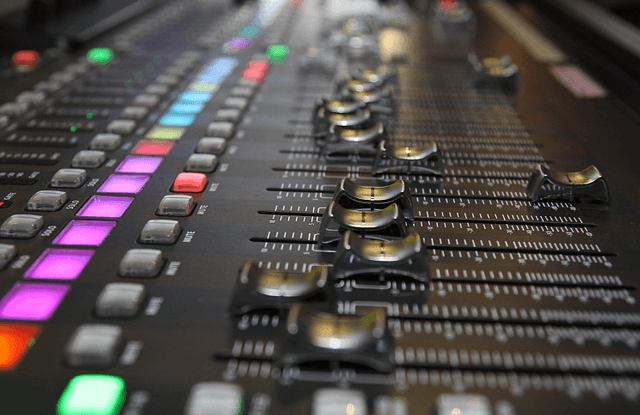
![[KR] 중국, 4월 경기지표 너머로](/_next/image?url=https%3A%2F%2Fetfprod.premia-partners.com%2FarticleImg%2Fpic%2F230608131242592.png&w=640&q=75)
![[KR] 중국 국영기업(SOE) – 리레이팅·가치 재평가 과정 속 잠재 가치를 발굴하기 위한 여정](/_next/image?url=https%3A%2F%2Fetfprod.premia-partners.com%2FarticleImg%2Fpic%2F230528190547336.jpg&w=640&q=75)


![[KR] 중국 투자자·자산배분 투자자들로부터 가장 많이 받은 질문 10가지](/_next/image?url=https%3A%2F%2Fetfprod.premia-partners.com%2FarticleImg%2Fpic%2F230320155855491.jpg&w=640&q=75)



![[KR] 2023 시장 전망 - 4부: 중국 테크주는 과연 투자할만한가?](/_next/image?url=https%3A%2F%2Fetfprod.premia-partners.com%2FarticleImg%2Fpic%2F221221154912833.jpg&w=640&q=75)
![[KR] 2023 시장 전망 - 3부: ASEAN, 중국 재개방 회복세 순풍 수혜국](/_next/image?url=https%3A%2F%2Fetfprod.premia-partners.com%2FarticleImg%2Fpic%2F221216162312357.jpg&w=640&q=75)
![[KR] 2023 시장 전망 - 2부: 중국 시장에 대한 고찰](/_next/image?url=https%3A%2F%2Fetfprod.premia-partners.com%2FarticleImg%2Fpic%2F221205135003491.jpg&w=640&q=75)

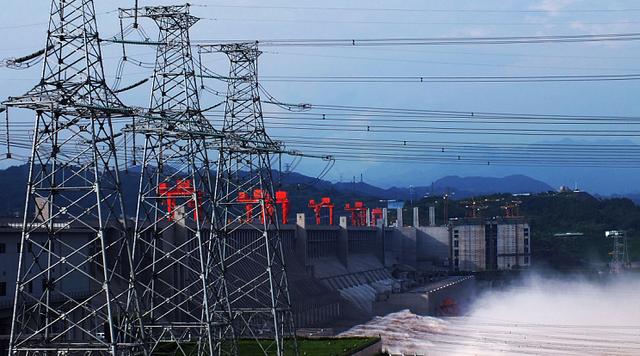







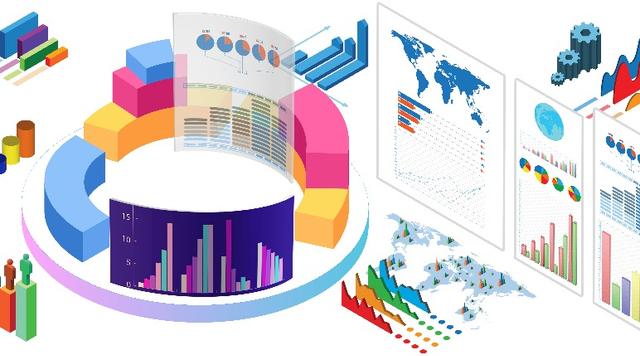


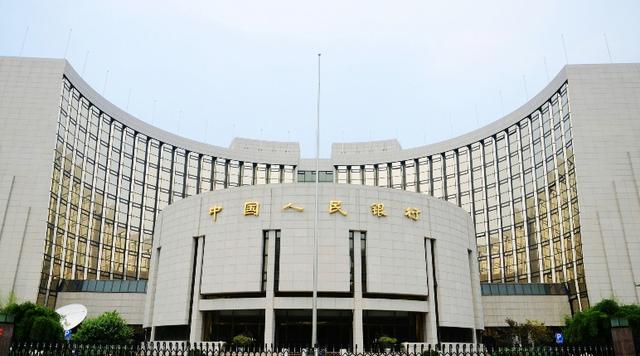






![[WORKING PAPER] Equity Duration: What cease to hold and what still does? – Relative Perspectives on China vs. the US and the New vs. the Old](/_next/image?url=https%3A%2F%2Fetfprod.premia-partners.com%2FarticleImg%2Fpic%2F201126150748895.jpg&w=640&q=75)

